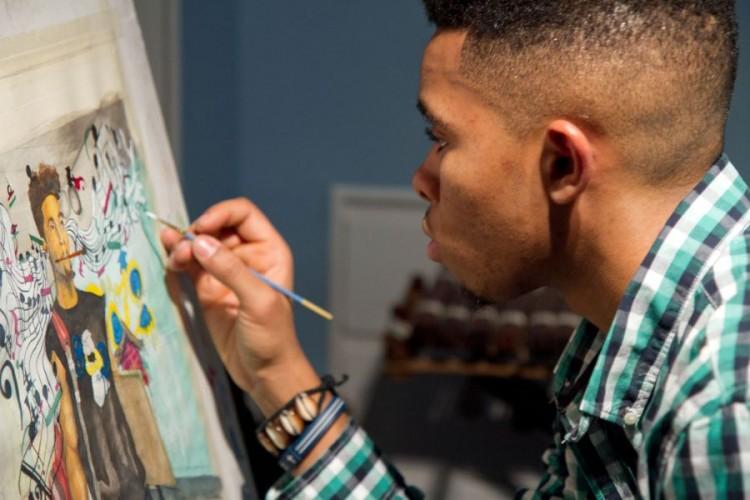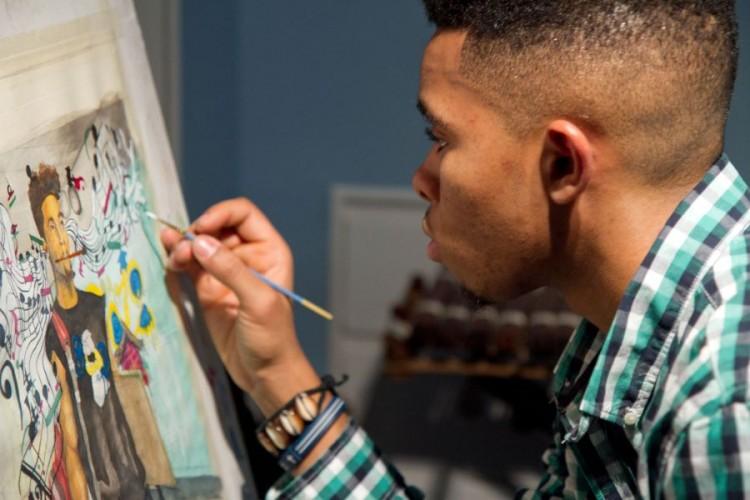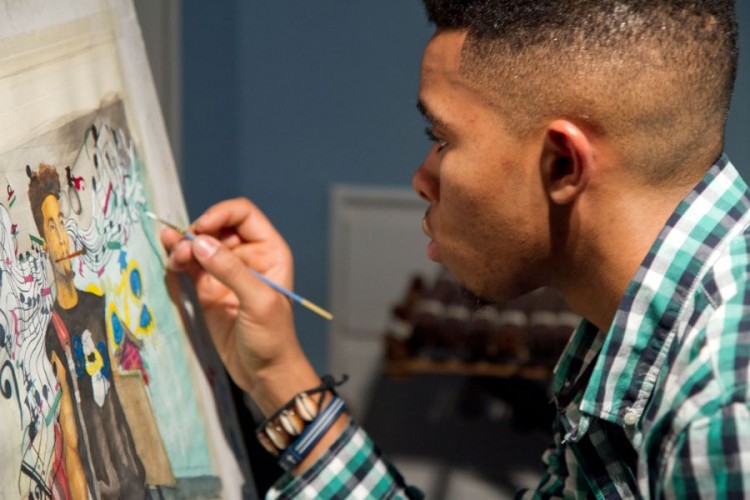NEW YORK—Jean-Lemke Charlot II, 18, of Queens traveled to the White House during Black History Month to hang one of his paintings exploring his African roots.
President Barack Obama sought works of art by America’s youth that depict Black history and women’s history, and Charlot’s work fit the bill.







